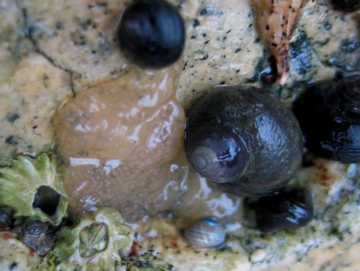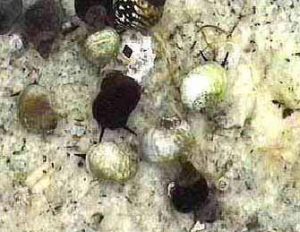
Figure 1 In Fig. 1 the snails were purposely placed on the white quartz substrate to show the contrast between a shell of color 27 ( white ) and some of colors 1 – 10 ( Black to grey ).
See this file for an extended essay on Patterns of Color Polymorphism in Littorina sitkana
Littorina sitkana, the Sitka periwinkle, commonly has a fat, almost globuse shell which reaches a height of a little more than 1.5 cm and is decidedly higher rather than wide. It generally has strong spiral sculpting in the form of continuous ridges and furrows with the spire generally consisting of 3 whorls with a white band inside the aperture.
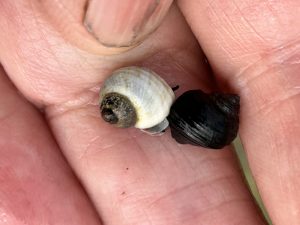 I checked the tidepool #4 again in June of 2024 to see if the white periwinkle still existed there and I found this one
I checked the tidepool #4 again in June of 2024 to see if the white periwinkle still existed there and I found this one
Domain Eukarya
Kingdom Animalia
Phylum Mollusca
Class Gastropoda
Subclass Prosobranchia
Genus Littorina
Species sitkana (Philipi 1845)
COMMON NAME: Intertidal Sea Snail – Periwinkle
As is the case with many intertidal gastropods, Littorina sitkana shows remarkable colour variablity which is a common occurance in both microhabitats sheltered and exposed to wave action.Some specimens are monotonously brown or grey, but others have lighter bands especially on the upper sides of whorls. The lighter areas and occasionally much of the body may be a rather pretty orange or yellow. Another periwinkle which is often found in the same intertidal area is Littorina scutulata
Previous studies have shown that there is close link between the shell colouration of periwinkles and their background substrate, that is, there is a very strong relation between the shades of the periwinkle’s shell and the colours of the rock – light cloured shells stayed on light shaded rocks and vice versa.
The influence of abiotic factors on the distribution of organisms is referred to in the file on Geology as an Abiotic factor.
REFERENCES CITED:
text/journal article references:
*Buckland-Nicks, J.A. and Chia,F.S.(1990).Egg capsule formation and hatching in the marine snail, Litorina sitkana,Phil.trans.Roy.Soc.Lond.Ser.B.326:159-176
*Exploring the seashore (p.69)
*Seashore life of the North Pacific Coast (p.122)
Other Members of the Phylum Mollusca at Race Rocks.
Dec. 2001 Anneline Fisher
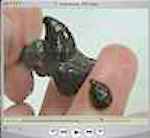 Domain Eukarya
Domain Eukarya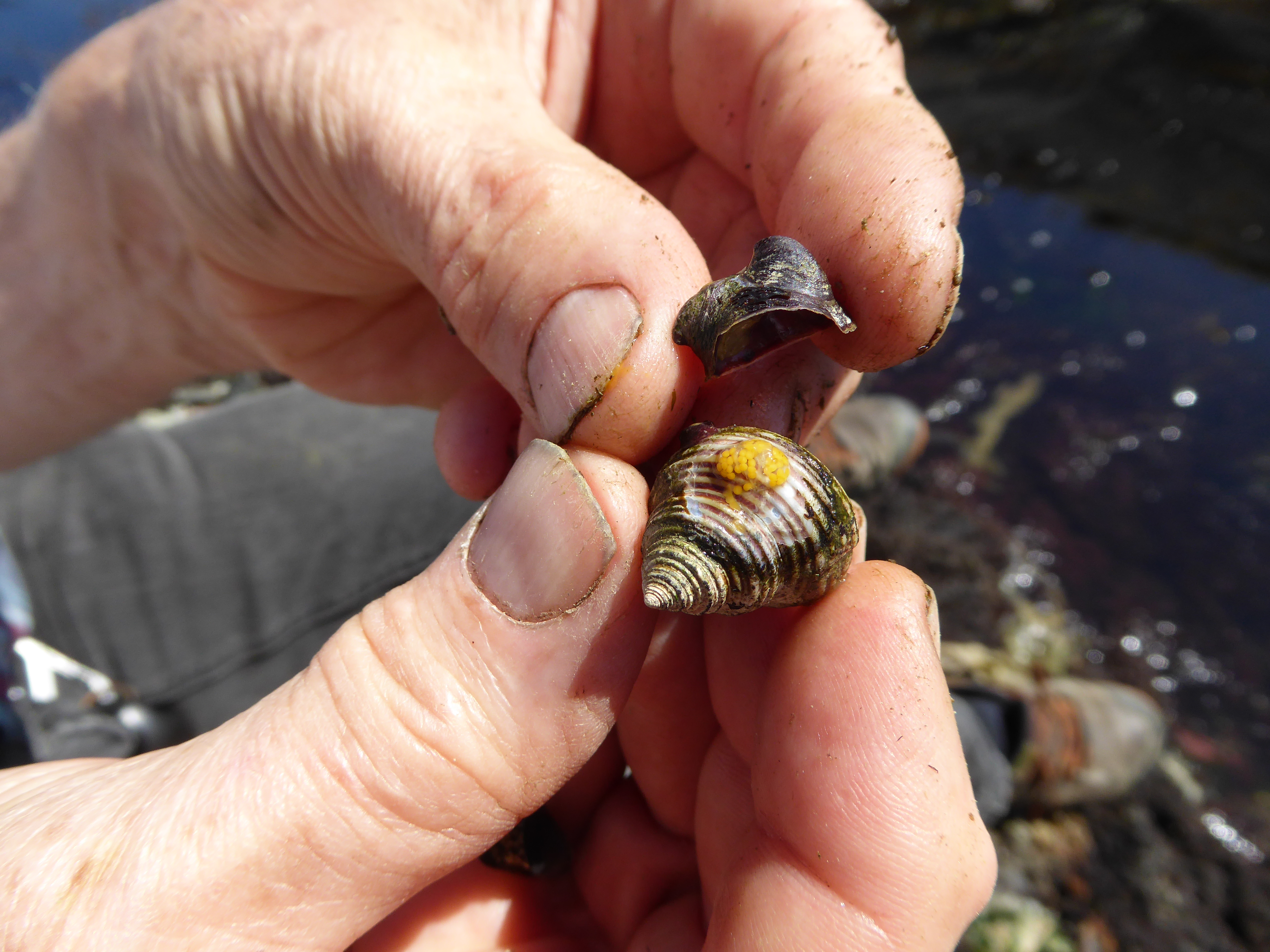
 The Race Rocks taxonomy is a collaborative venture originally started with the Biology and Environmental Systems students of Lester Pearson College UWC. It now also has contributions added by Faculty, Staff, Volunteers and Observers on the remote control webcams.
The Race Rocks taxonomy is a collaborative venture originally started with the Biology and Environmental Systems students of Lester Pearson College UWC. It now also has contributions added by Faculty, Staff, Volunteers and Observers on the remote control webcams. 